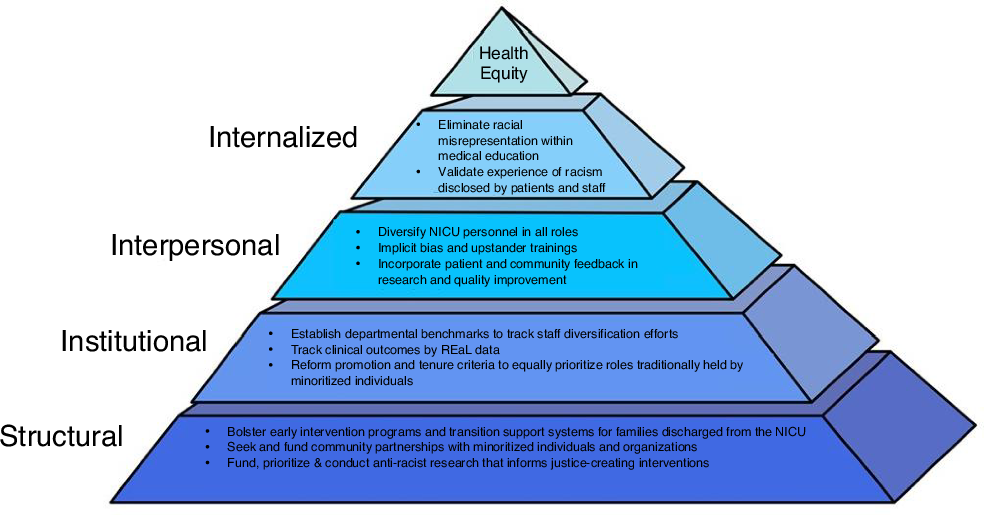Promising Interventions to Reduce Health Disparities in Alberta – BIOENGINEER.ORG

Report on Interventions to Reduce Health Disparities in Alberta
Introduction: Aligning Health Equity with Global Goals
A recent environmental scan conducted by researchers Hastings, Botey, and Salas in Alberta, Canada, examines promising interventions to reduce health and cancer disparities among marginalized populations. This research directly addresses several United Nations Sustainable Development Goals (SDGs), primarily focusing on ensuring equitable access to healthcare and reducing systemic inequalities. The findings provide a critical framework for advancing global health objectives through targeted, community-focused strategies.
Advancing Sustainable Development Goals Through Healthcare Innovation
SDG 3: Good Health and Well-being
The study’s core objective is to improve health outcomes and ensure access to quality essential healthcare services for all, which is a central tenet of SDG 3. By investigating interventions that bridge gaps in health and cancer care, the research contributes to:
- Reducing premature mortality from non-communicable diseases, such as cancer, through prevention and treatment.
- Achieving universal health coverage, including financial risk protection and access to safe, effective, and affordable essential medicines and services.
- Strengthening the capacity for early warning, risk reduction, and management of national and global health risks.
SDG 10: Reduced Inequalities
The research places significant emphasis on dismantling the structural barriers that perpetuate health disparities, directly aligning with SDG 10. The study highlights that health inequities are deeply rooted in socioeconomic factors and systemic disadvantages.
- Addressing Social Determinants: The report underscores that factors such as income, education, and geographic location are critical drivers of health outcomes, necessitating interventions that address these root causes of inequality.
- Empowering Marginalized Communities: By focusing on community-driven initiatives, the research promotes the social and economic inclusion of all, irrespective of background, ensuring that vulnerable populations have a voice in their healthcare.
- Promoting Equitable Access: The interventions evaluated aim to ensure equal opportunity and reduce inequalities of outcome by providing tailored healthcare solutions to those who have historically faced the greatest barriers.
Analysis of Promising Healthcare Access Interventions
Key Strategies for Enhancing Health Equity
The environmental scan identified three categories of promising interventions designed to improve healthcare access and outcomes:
- Community-Driven Initiatives: These grassroots efforts foster inclusivity and are responsive to the unique cultural and social needs of local populations. This approach builds trust and engagement, contrasting with traditional top-down models and contributing to sustainable community health (SDG 11).
- Telehealth Services: Remote access to healthcare providers helps overcome geographical and mobility barriers, ensuring that more individuals can receive timely care, which is crucial for early detection and treatment.
- Culturally Tailored Outreach Programs: These programs engage minority populations in a manner that respects cultural norms and promotes collaboration, enhancing health literacy and encouraging proactive health-seeking behaviors.
Core Findings and Implications for Sustainable Development
Evidence-Based Outcomes
The interventions studied demonstrate significant potential to advance public health and contribute to the SDGs. Key findings include:
- Improved Health Outcomes: Initiatives reported increased rates of early cancer detection and treatment among previously underserved populations, a direct contribution to the targets of SDG 3.
- Holistic Approach: The report confirms that addressing health disparities requires a comprehensive strategy that integrates social determinants of health into healthcare planning and delivery, reinforcing the interconnected nature of the SDGs.
- Importance of Adaptation: Continuous evaluation and refinement of interventions are essential for long-term sustainability and effectiveness in a changing health landscape.
The Role of Collaboration and Advocacy (SDG 17: Partnerships for the Goals)
The research highlights that progress toward health equity is accelerated through robust partnerships. Engaging policymakers, community stakeholders, and healthcare providers is imperative for mobilizing resources and implementing effective, sustainable interventions. This collaborative spirit is fundamental to achieving the 2030 Agenda for Sustainable Development.
Conclusion and Future Directions
The research by Hastings, Botey, and Salas provides a compelling case for adopting innovative, community-centric, and equity-focused healthcare interventions. The findings from Alberta offer a replicable model for other regions grappling with similar challenges. To achieve a future where health equity is a reality, as envisioned by the Sustainable Development Goals, the global healthcare community must embrace these evidence-based strategies. The journey requires a sustained commitment to dismantling systemic barriers and ensuring that everyone, regardless of their circumstances, has an equal opportunity to lead a healthy life.
Analysis of Sustainable Development Goals in the Article
1. Which SDGs are addressed or connected to the issues highlighted in the article?
-
SDG 3: Good Health and Well-being
- The article’s primary focus is on health, specifically addressing “health disparities,” “cancer care,” and improving “health outcomes.” It directly relates to SDG 3’s mission to “ensure healthy lives and promote well-being for all at all ages.” The research aims to find solutions for “equitable access to life-saving health services,” which is a core principle of this goal.
-
SDG 10: Reduced Inequalities
- The article is fundamentally about inequality. It highlights how “health inequities” are linked to “socioeconomic factors” and “structural inequalities.” The research focuses on “marginalized populations” who face “systemic barriers” to healthcare. This directly aligns with SDG 10, which aims to “reduce inequality within and among countries” by empowering and promoting the inclusion of all, irrespective of their background.
2. What specific targets under those SDGs can be identified based on the article’s content?
-
Targets under SDG 3 (Good Health and Well-being)
- Target 3.4: “By 2030, reduce by one third premature mortality from non-communicable diseases through prevention and treatment…” The article’s emphasis on addressing “late-stage cancer diagnoses” and improving “early detection and treatment of cancers” is a direct effort to reduce mortality from a non-communicable disease.
- Target 3.8: “Achieve universal health coverage, including… access to quality essential health-care services…” The entire article revolves around improving “health care access” for all. The interventions studied, such as “telehealth services” and “culturally tailored outreach programs,” are methods to achieve universal access to healthcare services for underserved populations.
-
Targets under SDG 10 (Reduced Inequalities)
- Target 10.2: “By 2030, empower and promote the social… inclusion of all, irrespective of… economic or other status.” The research champions “community-driven initiatives which prioritize inclusivity and accessibility” and engage “minority populations.” This approach aims to empower marginalized individuals and ensure their inclusion in the healthcare system.
- Target 10.3: “Ensure equal opportunity and reduce inequalities of outcome…” The article’s goal is to diminish “disparities in health outcomes” and bridge the “divide” in health trajectories caused by “structural inequalities.” The interventions are designed to create more equal opportunities for achieving good health.
3. Are there any indicators mentioned or implied in the article that can be used to measure progress towards the identified targets?
-
Indicators for SDG 3 Targets
- For Target 3.4: The article explicitly mentions that some initiatives reported “increased rates of early detection and treatment of cancers.” This is a direct, measurable indicator of progress. A corresponding indicator would be a decrease in the incidence of “late-stage cancer diagnoses” among the target populations.
- For Target 3.8: Progress can be measured by tracking the utilization of the new interventions. For example, the number of patients from marginalized communities using “telehealth services” or participating in “outreach programs” would be a key indicator of improved access. The article also mentions enhancing “health literacy,” which could be measured through community surveys before and after an intervention.
-
Indicators for SDG 10 Targets
- For Target 10.2/10.3: A primary indicator is the reduction of the gap in health outcomes between marginalized groups and the general population. This could be measured by comparing cancer survival rates, life expectancy, or prevalence of chronic diseases. The article implies that success is measured by bridging the “divide that has existed for far too long,” meaning a statistical reduction in health disparities is the key indicator.
4. Summary Table of SDGs, Targets, and Indicators
| SDGs | Targets | Indicators Identified in the Article |
|---|---|---|
| SDG 3: Good Health and Well-being |
|
|
| SDG 10: Reduced Inequalities |
|
|
Source: bioengineer.org
What is Your Reaction?
 Like
0
Like
0
 Dislike
0
Dislike
0
 Love
0
Love
0
 Funny
0
Funny
0
 Angry
0
Angry
0
 Sad
0
Sad
0
 Wow
0
Wow
0


















































.jpg.webp?itok=0ZsAnae9#)





/environment-climate-change-and-health-(ech)/water-sanitation-hygiene-and-health-(wsh)/landfill-tuvalu-36092.tmb-1200v.jpg?sfvrsn=5c21fe40_1#)


















